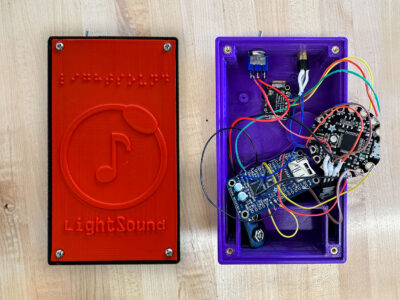Take a moment to think about the unique complexity of the brain. Its billions of neurons retain knowledge, interpret senses, initiate movements and control behaviors. It also advances over time, responding to survival instincts and managing the demands of its surroundings while still fostering intellectual curiosity. Researchers studying what’s known as “neuro-inspired AI” want to decode this complexity to transform artificial intelligence technology, which scours for resources and excels at well-defined tasks, but isn’t as resilient or adaptive as the brain. And few institutions are doing a better job of making advancements in neuro-inspired AI than UTSA.
“When we started in neuro-inspired computing a little over a decade ago, people were speculative about the technology,” recalls Dhireesha Kudithipudi, Robert F. McDermott Endowed Chair in Engineering and founding director of MATRIX. “Now, we are seeing a new wave in the field where an increasing number of groups want to apply neuro-inspired approaches to solve complex problems. We have hosted the 10th flagship conference on neuro-inspired computing elements right here at UTSA with global leaders in the field, including Intel, IBM and SpiNNaker. It is incredible.”
Unlocking the brain’s potential could have a tremendous impact on AI’s energy footprint. AI algorithms currently require massive amounts of data that require massive data centers that require massive amounts of energy to keep their servers running. The brain, by contrast, is extremely energy-efficient, Kudithipudi explains. Among her many AI research projects over the years, Kudithipudi’s team developed energy-efficient continual learning algorithms inspired by the honeybee brain. Although insect brains are a million times smaller than human brains, they are still capable of remarkably complex behavior. Replicating that kind of efficiency in energy-constrained devices, such as mobile phones, would be transformational for society.
“The beauty of the brain is that it’s able to do information processing in an extremely compact form factor,” she says. “The brain is very small compared to the AI computing systems that are out there, many of which are consuming energy at an unsustainable rate.”

Groundbreaking research like Kudithipudi’s could lead to AI systems that require less energy, which is a big reason why industry leaders, the Department of Energy and the Department of Defense have expressed great interest in UTSA’s expertise. MATRIX is comprised of nearly 70 researchers from different domains that provide unique perspectives on artificial intelligence. This convergence is leading to more comprehensive problem-solving, says Amanda Fernandez, assistant professor in the UTSA Department of Computer Science.
“A few years ago, UTSA began a cluster hiring of faculty with research in AI across fields — bringing in researchers in the sciences, math, engineering, humanities and business with aligned interests. This, to me, has made all the difference,” she says. The resulting collaborations have not only helped UTSA researchers earn more funding, Fernandez adds, but have also introduced the university’s undergraduate students to cutting-edge research branching out through various areas of study.
Fidel Santamaria, professor in the UTSA Department of Neuroscience, Developmental and Regenerative Biology, co-leads the MATRIX research thrust focused on neuro-inspired AI. He attributes UTSA’s positive momentum in this field to a passionate mass of researchers interested in the relationship between computational systems and the way the brain works. UTSA now has many experimental researchers eager to tackle questions about brain function and their applications in computer science. Conversely, researchers in engineering and computer science, among other departments, have responded with an enthusiastic interest in neuroscience. His lab is a perfect example of this kind of cross-disciplinary teamwork.
“In my laboratory, I lead a diverse group of scientists composed of theoretical physicists, neuroscientists and electrical and biomedical engineers,” Santamaria says. “We perform experiments to understand how single neurons work, build computer models to predict their behavior, develop theories to abstract their computational properties and implement them in electric circuits.”
UTSA’s collaborations in neuro-inspired AI have also proven fruitful in therapeutics. In another MATRIX research thrust, Amina Qutub, Burzik Professor in Engineering Design at UTSA, is co-leading a group exploring how AI can enhance human capabilities. Her research group has developed an experimental computational framework that mimics brain cell network dynamics. This research could help develop therapies to improve neurogenesis (the formation of new neurons in the brain) to help children and adults with neurological disorders.
“AI paired with medicine and engineering can solve humanity’s key challenges, like restoring neural function for children with rare diseases and adults with dementia, improving social equity and helping out caregivers,” Qutub says. “A challenge is holding AI to this high of a standard. MATRIX is doing exactly that.”

Reshaping Representation
Three years ago, women made up only 22% of the AI workforce around the globe, according to the World Economic Forum. Only 6% of the tech industry is women of color. That situation, however, is slowly shifting for women like recent UTSA grad Tomisin Adebayo with the help of programs such as Project LoveLace.
UTSA’s Project LoveLace aims to broaden and strengthen the gender diversity of the AI workforce by providing a community of support to help female STEM students blossom. Its mission is to increase representation, participation and the entrepreneurial skills of women in technology-focused careers. Female UTSA students work closely with faculty mentors through the program and immerse themselves in groundbreaking research environments. The project was launched through a gift from Xilinx (which was acquired by AMD in 2022).
Through Project LoveLace, Adebayo found a mentor in Qutub. Over the course of two years in Qutub’s lab, Adebayo developed new algorithms to study brain cell communication from images obtained in the lab. Adebayo says she became even more certain about her future under Qutub’s guidance. They hosted talks to share their work with the community, during which she witnessed the impact of their research.
Qutub continues to guide her today. This fall, Adebayo is beginning her doctoral studies in bioengineering at Georgia Tech. Her experience with Qutub in Project LoveLace has instilled an unwavering sense of aspiration.
“Seeing that she’s done work both in the industry and in research is very inspiring,” Adebayo says. “Amina Qutub guiding me along the way is something that I really cherish. It lets me know that what I want to do is possible.”
So far, Project LoveLace has seen two cohorts with a total of 13 student and mentor pairings. They’ve embarked on various AI research topics in disciplines such as construction science, civil engineering and biomedical engineering. Among the research topics, participants have applied data to evaluate student sentiments about online learning during the pandemic using Twitter while others studied behavioral data to analyze cognitive changes.
“This is highly significant in the current context that we’re talking about because you see AI is everywhere all at once, and it’s impacting our daily lives in so many ways,” says Kudithipudi, director of Project LoveLace. “For us to support a little bit of our female students’ career ambitions with this kind of programming is just pure joy.”
NEXT STORY IN SERIES:
From e-scooters to cancer treatments, learn about six fascinating AI research projects happening at UTSA.



